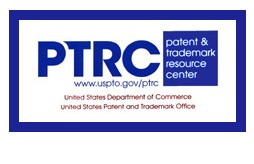Libraries
T®ademark Searching
Legal Disclaimer
This guide is for instructional purposes only and is not intended to provide legal advice or to substitute for the legal advice of an attorney at law.
For comprehensive information, see the USPTO's Get Ready to Search.
Step One
Describe the products and/or services being sold with the mark. Make a list of every possibility in terms of potential products and/or services. For example, you want to manufacture and sell your own brand of ice cream (a good). The possibility is there to open your own ice cream shop to serve ice cream in a brick and mortar store, or ice cream truck or food cart (a service) — or similar things in a reverse order.
Step Two
Identify specific terms for your product or service using the Trademark Next Generation Identification Manual . These terms might not always be what you would expect. The entry for your product or service in the TM NextGen ID Manual will also list the appropriate International Class for that product or service. While providing the class for your goods or services is not a requirement for an application (an exception is a TEASPlus application), knowing your international class can aid in focusing your search.
Step Three
Determine the appropriate International Class for your product or service. You can browse the International Classes through the Trademark NextGen ID Manual or through WIPO's Nice Classification by class and then alphabetically. These databases are identical.
To browse in the TM NextGen ID Manual, click on the ![]() in the upper left of the window. Then go down to where it says "Class" and click on the icon next to the search box.
in the upper left of the window. Then go down to where it says "Class" and click on the icon next to the search box.
Step Four
Identify related goods and/or services and their classes. Identify terms for related goods and/or services that are used, advertised or sold with your product. For instance, peanut butter is sold and used with jellies and jams. Also scan the International Classification of Goods and Services for classes that are related to your product or service.
Step Five
Develop a basic search strategy. Brainstorm several alternatives to your mark in case your first choice is taken. Are there reasons why the USPTO might reject your mark? (See common refusals at https://www.uspto.gov/trademarks/search/likelihood-confusion). If your mark includes a phrase, what are the most important keywords? Don’t forget to use truncation devices (*) or wildcards (?) to look for marks with word stems similar to yours.
Step Six
Broaden your search strategy.Consider searching with alternative spellings and homonyms to your mark. Use words that have the same or similar meanings to your mark. Also try words that have similar sounds or appearances or even phonetic equivalents. If necessary, the strategy can be narrowed later by limiting your search results with the goods/services you found in Step 2 or the International Class you found in Step 3.
Step Seven
Conduct the search. Search on TSS--the USPTO’s web-based Trademark Electronic Search System—at your local Patent and Trademark Resource Center (www.uspto.gov/ptrc) or at home if you have Internet access.
Step Eight
Search Logos and Designs if needed. Use the Design Search Code Manual (https://tmdesigncodes.uspto.gov/) to determine the correct design search code(s) for your mark’s graphic design components (if it has any). Use these design codes in a search on TSS to see if there are other marks with a similar design element for similar products/services as yours.
Step Nine
Search state registered marks. Searching state registrations is just as necessary as searching the federally registered marks. As more and more businesses transact business across state lines, the more problematic the territoriality of marks becomes. Even so, this is not something the USPTO checks before granting a federal registration. Which means you might go through the entire process and have to relinquish your mark when challenged by someone already using your mark or one similar enough to cause a likelihood of confusion. Unfortunately, there is no free service for searching all 50 states simultaneously. States display and manage their trademark registration differently. Usually, it's easy to find just by Googling search (state name) trademarks.
Step Ten
Search common law (unregistered) marks. Common law marks are marks used in commerce that have never been registered at the state or federal level. First use of a mark in commerce is usually protected by common law during court rulings. So, it's a good idea to search for common law marks before you start using a mark. Again, marks are classified, so make sure you used words from your international classes as you search.
Common Law Marks May Be Found In:
- Telephone, business and manufacturing directories
- Print and online catalogs
- Trade journals and magazines
- Web search engines and portals
- Newspapers, press releases and new product announcements
Step Eleven
Search international marks. You should search international marks in case you might ever want to expand to international markets or a competitor might want to expand to the United States. You can search international marks in WIPO's Global Brand Database.

Quick Links:
- Trademark Next Generation ID Manual
- International Classes (short version)
- USPTO Trademark Search System (TSS)
- USPTO Trademark Design Search Code
- 7 Step Federal Trademark Search Strategy (outdated)
- Conducting a Trademark Search (USPTO)
- Illinois Secretary of State – Searching Illinois Trademarks
- Links to Each State's Trademark Registration pages
- Google (e.g.: search Alabama trademarks)
- Global Brand Database
